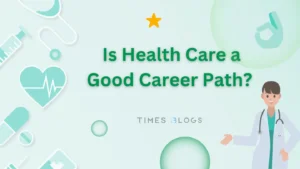Understanding what is intro to health science is becoming increasingly important as more teens show interest in careers in medicine, public health, biotechnology, and other health-related fields. According to the World Health Organization, the global healthcare workforce needs an additional 10 million professionals by 2030, which makes early exposure to health careers more relevant than ever. An Intro to Health Science course gives teens a foundational understanding of human biology, healthcare systems, medical ethics, and clinical skills, helping them make informed decisions about future career paths.
This article breaks down the purpose, structure, and benefits of health science education for teens while offering facts, figures, and credible insights to support your understanding.
A Foundation in Human Biology and Health Systems
At its core, what is intro to health science refers to a beginner-level academic course designed to introduce teens to essential topics within the health sciences. These topics often include anatomy and physiology, nutrition, epidemiology, public health, medical terminology, and the structure of healthcare systems. Organizations like the National Institutes of Health report that 60, 70% of high-school health students express interest in learning how the body works, making these courses highly valuable.
Typically taught in middle schools, high schools, and youth enrichment programs, these introductory classes use hands-on activities and real-world case studies to keep students engaged. Teens might explore how diseases spread, how medical technology is used in hospitals, or how lifestyle choices impact long-term health outcomes. This early exposure not only builds confidence but also sparks curiosity about medical science.
Why Health Science Education Matters for Teen Development
When teens ask, “What is intro to health science going to teach me?” the answer extends far beyond textbook learning. Research from the U.S. Bureau of Labor Statistics predicts that healthcare occupations will grow 13% from 2021 to 2031, much faster than the average for all fields. Early education helps teens tap into this growing job market.
The benefits of taking an intro course include:
- Career awareness: Teens learn about roles such as nurses, EMTs, medical researchers, lab technicians, dietitians, and health administrators.
- Critical thinking skills: Through case analyses and scenario-based learning, students strengthen decision-making and problem-solving abilities.
- Science literacy: Understanding health data, evidence-based practice, and patient care models builds strong academic foundations.
- Life skills: Topics like first aid, personal health management, and disease prevention help teens build healthier lifestyles.
This broad exposure helps students determine whether a health-related career is right for them long before college.
Exploring Medical Careers Through Practical Activities
One of the defining features of what is intro to health science is hands-on learning. Instead of memorizing theories, students experience simulated medical environments to deepen understanding. Many programs include:
- CPR and First Aid Training
- Basic vital sign measurement (heart rate, blood pressure, respiration)
- Introduction to medical equipment (stethoscopes, thermometers, otoscopes)
- Role-playing patient-care scenarios
- Guided dissections or anatomy labs
A study published by the Association for Career and Technical Education showed that teens participating in health science programs were 30% more likely to pursue STEM college majors. Practical experiences help students identify their strengths—some may excel in patient interaction, while others might prefer laboratory settings or administrative roles.
These applied activities also align with popular youth career-prep programs such as HOSA-Future Health Professionals, which hosts competitions in medical spelling, biomedical debate, and clinical nursing.
Key Topics Covered in an Intro to Health Science Course
If you’re still wondering what is intro to health science, it helps to break down the core curriculum areas. Most courses include the following essential modules:
1. Medical Terminology
Students learn prefixes, suffixes, and Latin/Greek terms commonly used in healthcare. This improves communication and prepares them for more advanced medical training.
2. Anatomy and Physiology
Teens study the human body’s systems—skeletal, muscular, respiratory, digestive, endocrine, and nervous systems. According to the American Association of Anatomists, anatomy is among the most requested subjects in high-school biology enrichment.
3. Health Careers Exploration
From surgeons and pharmacists to radiology technicians and physical therapists, students learn the duties, salaries, and training required for each profession. The median annual wage for healthcare practitioners was $75,000+ in 2023—an encouraging number for teens planning long-term careers.
4. Nutrition and Wellness
Teens examine the role of diet, exercise, sleep, and mental health in maintaining health. With 42% of U.S. teens reporting regular stress-related symptoms, this topic is vital.
5. Public Health and Epidemiology
Students explore disease prevention, vaccination, community health, and outbreak investigation. These topics became especially relevant during and after global health emergencies.
6. Medical Ethics and Professionalism
Teens learn about patient confidentiality, informed consent, and ethical dilemmas. This helps build empathy and awareness of professional responsibilities.
How Intro to Health Science Helps Teens Choose a Career Path
A major reason parents and educators support these programs is the career clarity they offer. Understanding what is intro to health science can lead students directly into health-related majors or pre-professional pathways. According to the American Medical Association, students exposed to medical education before college are 40% more likely to pursue healthcare degrees.
Some career pathways intro courses support include:
- Medicine (doctor, surgeon, physician assistant)
- Nursing (RN, LPN, nurse practitioner)
- Allied health (respiratory therapist, radiology tech, medical assistant)
- Public health (epidemiologist, health educator)
- Behavioral health (psychologist, counselor)
- Biomedical science (geneticist, researcher)
These programs give teens early confidence, clarity, and direction—helping reduce stress when choosing college majors or technical school tracks.
The Role of Technology in Modern Health Science Education
Today’s Intro to Health Science courses are more interactive than ever. With the rise of digital learning tools, students can explore medical science using:
- Virtual dissection tables
- 3D anatomy software
- Augmented reality health simulations
- Online patient-diagnosis games
- Wearable health monitoring devices
According to Education Week, over 55% of high schools now integrate some form of digital health science curriculum. These tools improve comprehension and make the learning experience more immersive.
As students use digital resources, they also learn STEM-related skills including data analysis, digital literacy, and evidence-based research—skills highly valued in modern healthcare jobs.
Preparing Teens for Future Healthcare Opportunities
By this point, the question “what is intro to health science” clearly goes beyond a simple class definition. It is a multidisciplinary stepping stone that prepares students for a rapidly evolving healthcare landscape. With an aging population, rising demand for medical technology, and increased focus on preventive health, students who start early gain a competitive advantage.
These courses also develop essential soft skills such as communication, empathy, patience, and teamwork—all crucial in healthcare environments.
As more teens participate in Intro to Health Science programs, the future healthcare workforce becomes stronger, better informed, and more prepared to meet global needs.
Click Nakash health to read more informational health blogs
FAQs: What Teens Should Know About Intro to Health Science
1. What exactly does an Intro to Health Science class teach?
It teaches the basics of medical science, human anatomy, healthcare careers, medical ethics, and clinical skills. It serves as a foundation for students interested in health and STEM fields.
2. Is Intro to Health Science good for teens who are unsure of their career path?
Yes. It helps students explore a wide range of medical and health professions, making it great for teens still exploring options.
3. Does Intro to Health Science include hands-on activities?
Most programs include CPR training, vital signs practice, lab activities, and sometimes virtual simulations.
4. Can this course help teens in college admissions?
Absolutely. Colleges value early exposure to STEM and health science coursework because it shows interest, initiative, and academic commitment.
5. Is the course only for students interested in becoming doctors?
No. It benefits future nurses, therapists, researchers, technicians, public health specialists, and many other healthcare professionals.
References / Sources
- World Health Organization , Global Health Workforce Data
- U.S. Bureau of Labor Statistics , Healthcare Occupation Outlook
- National Institutes of Health , Teen Science Interest Statistics
- American Medical Association , Pre-Medical Education Reports
- Association for Career and Technical Education , STEM Career Pathway Data
- Education Week , Digital Learning in Health Science Classrooms



